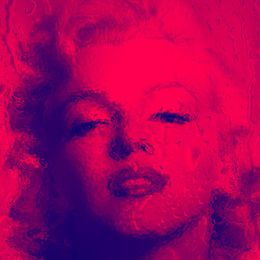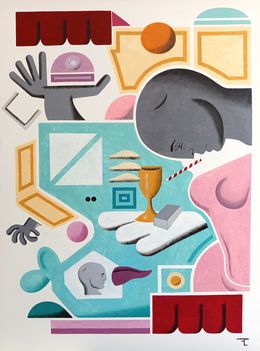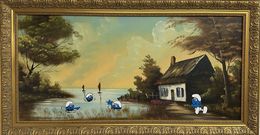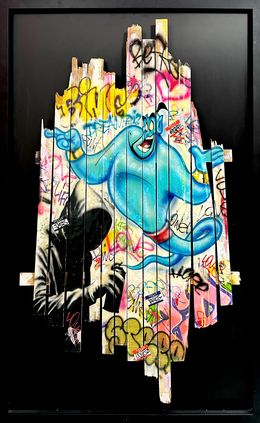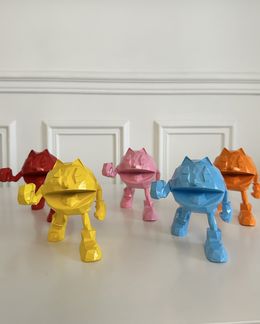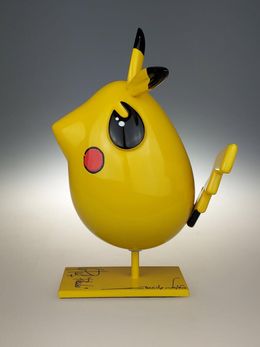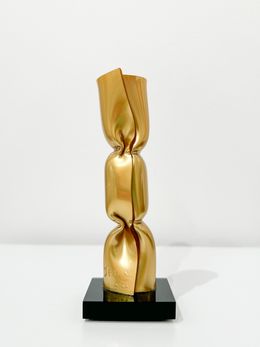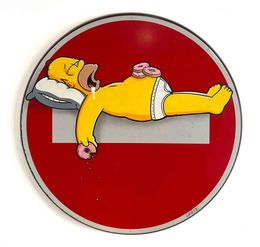Query
Category Painting Print Sculpture Photography Design Fine Art Drawings
Artist Death NYC Spaco Vincent Sabatier Sephora Venites Dr. Love PyB Richard Orlinski Takashi Murakami Patrick Cornée Dervis Akdemir MrHope Diederik Van Apple Kaws JP Malot Seb Paul Michel Ske Mr Brainwash Ad Van Hassel Kristina Mallen Priscilla Vettese Sagrasse Erró Fat Marian Williams James Chiew Simone De Rosa Hiro Ando Konovalov Igor Ravi Naor Kobalt Samsofy Daru Batik Rico Sab Clotilde.MJ Shin Seung-Hun Jean-Philippe Berger Muriel Deumie Âme Sauvage Nacks MAM Wo$h Carlos Pun Art Bernard Saint-Maxent Koen Betjes Jean-Philippe Henric Keymi N.Nathan Jug Yasna Godovanik Virginia Benedicto Sylvie Cappe Michael Daniels Miguel Guía Onemizer Arson VL. Marta Zawadzka tizlu Shepard Fairey (Obey) Dezache Miko-R Arsen Karl Lagasse Maxime Andriot Gardani Art Bearbrick Invader Lasveguix Ghost Art Mercedes Lagunas Iryna Kastsova Art By Son Wawapod Nataliya Bagatskaya Martin Aiiroh Keith Haring Olivier Messas Patrick Rubinstein Dina Goldstein Mr Popart Fred Meurice In the Woup Frany La Chipie Flu Maria De Campos Esteban Vera Anatoly Varvarov B.AX Speedy Graphito Fabien Novarino M. Koeur Tarek KiKo Guillaume & Anthony Angela Gomes Yohan Storti Alessandro Piano
Color Red Yellow Sky blue Pink Black Dark blue Green White orange Grey Beige brown Purple golden Navy blue Silver transparent Blue
Orientation Portrait Square Landscape
Medium acrylic aerosol paint resin collage Screen Print Posca oil mixed media marker paper digital art fine art print wood giclée plastic ink canvas digital print tirage fine art Stencil lithography aluminium plexiglass digigraphy assemblage steel metal lacquer HD print pigment ink sequins oil stick gold leaf plaster vinyl poster pastel epoxy paint ceramic PVC pencil offset lithography object C-print Indian ink Acrylic binder Hahnemüehle paper Watercolour marble powder archival pigment print Digital color print airbrush painting inkjet digital bronze glass charcoal chrome Digital Painting bank note artwork newspaper found object neon color edition colored pencil fiberglass gouache peinture vinylique etching cardboard gold Pigments Textiles Fine art paper 3D print enamel photo transfer LED Knife Painting engraving Porcelain stainless steel photo mosaic linocut silver print ballpoint pen Lego skateboard Stickers glue Swarovski crystals polistyrene clay stone concrete Butterfly diamond dust terracotta Crystal
Theme Pop Art Artworks Street art Portrait Animal Icons figurative Abstract artworks Comics Everyday life Nude Wall sculpture Cinema Decorative objects Floral Fashion Fantastic Graphic Geometric Art brut Artworks Conceptual Urban Landscape Artworks Vehicles Architecture Music Still Life Landscape Vanity Political and historical Sport Food Eastern Art African artworks Seascape Religious Black and white Tribal art Mountain landscapes Minimalism Under Water Garden Monumental From the sky Aboriginal art
Support canvas paper Fine art paper wood aluminium Hahnemuehle fine art paper Dibond Arches paper Genuine stock certificate bank note plexiglass cardboard Canson paper steel board cotton paper Wood cardboard + canvas Road Sign Linen plastic resin glossy paper Rives Artist & BFK Rives metal Fabriano paper foam lenticular screen Poster MDF watercolor paper paper mounted on canvas ceramic plaster handmade paper Diasec and Dibond baryta paper glass argentic paper enamelled plate found Object polyester canvas graphite marble Postal Card Plexiglas box washi paper vinyl stainless steel Diasec Concrete papier Fedrigoni Avorio ChromaLuxe textile Fujicolor Crystal Archive Paper Kodak Endura museum archival paper newspaper polypropylène papyrus granite Masonite radiographic paper Book burlap etching rag paper stone Leather kraft paper RC paper mirror silk paper iron Pastelmat Paper train tarp polyurethane PVC Bronze melamine object fiberglass Hahnemühle paper Sandstone Khadi paper porcelain slate tracing paper gypsum fiber polystyrene brass
Thematic Artworks Shipped From the United States A Pop Art Interior Inspired by Pop Art Frieze New York Bright and Vivid Colors Inspired by Warhol Inspired by Banksy The Best of our British Galleries Inspired by Art History American Dream Art Picks for Less Than $500 Love in Art Inspired by Manga The Spirit of the Seventies Cats and Dogs Women Artists Art Basel French Street Artists Art Paris Inspired by Basquiat Unique Art Gifts for Valentine’s Day Unusual Supports Graphic Arts Women by Women At home with Chairish Art of Antiquity Fashion-Inspired Works Artlympics: Olympic Games Paris 2024 Diversity Art and Tolerance Art Contour Line Typography in Art Exterior Decoration Back to the Future Industrial Interior Tropical Touch Pride Art Pixel Art Inspired by Sci-fi Ready-to-Hang Artworks Gift Guide for the Elegant Space Stylist Fantastical Beasts Images of the West Coast Art Basel Hong Kong Curated Black History Month Art: Iconic & Emerging Artists to Discover Summer Holidays Inspired by Magritte Inspired by David Hockney Vamos a la Playa Bath Time Environmental Art After Dark Hollywood Regency Style Inspired by Camilla d’Errico Frieze Los Angeles Crush of the Month: July Inspired by Mason Storm Gift Guide for the Bold Collector Masters of Modern Art Vintage Interior Abstract Op Art Gift Guide for the Friend Who Has Everything Children in Art Art Picks for Less Than $100 Inspired by Mythology Inspired by Graphic Design Gift Guide for the Trendsetter Gift Guide for the Fresh Face in Art African Art Asian-Inspired Interior The Art of Celebration States of Matter Inspired by Frida Kahlo A Natural Interior Takashi Murakami: Skulls Takashi Murakami: Flowers Inspired by Klimt Inspired by Sonia and Robert Delaunay Crush of the Month: Our Team's Favorites in May Mood: Mysterious Mood: Calm Gift Guide for the Statement-Maker Lille Art Up 2025 Mother's Day Inspired by Mondrian Hyperrealism Children's Bedroom Bauhaus Frieze Art Fair Curated by Artsper: The Art of Travel Inspired by James Ensor Crush of the Month: Our Team's Favorites in March Curated by Artsper: Swinging Sixties Crush of the Month: Our Team's Favorites in June Works Inspired by the Four Elements Mood: Celebratory 23 Artists to Watch in 2023 Lille Art Up 2024 : a selection of artworks created by our participating artists! Gift Guide for a First Step Into the Art World Affordable Art Fair Hong Kong Autumn Collection
Tag Pop Culture Graffiti Colors colorful Women Cartoons Fictional Character Faces Love Heart Composition Mickey Mouse Urban art Banksy Luxury Characters Disney Dollars Cats Marilyn Monroe Human body Look Money Art History Superheroes Lego Artworks Girl Scrooge McDuck Eyes Abstract art Neo-Pop Vintage Star Wars artworks Andy Warhol Mangas Snoopy Animal Sculptures Keith Haring Text Toys Sweets Men Children Cars Dogs 3D Basquiat People Batman Skull City Balloons Campbell`s Soup Bears Teddy Bear Expressionism Louis Vuitton Butterflies Figuration Video games Tags Chanel Pink Panther Skate Humour Goldorak Artworks Pattern Paris Brands Comic books New York Birds Japan Super Mario Surrealism Mona Lisa Simpsons Artworks Donald Duck Silhouette Young girl Barbie Peace Monkey Wild animals Hermes 80s Minnie Mouse Smile Logos Bust Surrealism Pop Couple Ice cream Robot Superman Kong Marvel Head 1970s Joconde
Price
Size Medium (< 115 x 115 cm) Small (< 50 x 50 cm) Large format Very small (< 25 x 25 cm) Very large (> 200 x 200 cm)
Selection Artworks by best-selling artists Young Talents Artworks by famous artists Special offers Our recommendations New & remarkable Artists Master Artists
Movement Pop Culture Street Artists Colorful Pop Sculptors Playful Street Art Logo-Inspired Artists Pop Culture Objects Satirical street artists Figurative Pop Artists Street Culture Animals Famous Street Artists Graffiti Artists Figurative Collage Provocative Artists Stunning Sculptures Movement Pop Art Famous Illustrators Industrial-Style Assembly Compositions with fictional characters Gestural abstraction Erotic Pop Art Rich and colorful figurations Movement Outsider Art Naïve-Style Illustrations Ancient Inspiration Figurative Street Artists Basquiat-style Artists Movement Narrative Figuration Famous Collage Artists Life Portrait Artists Surrealist Artists Accumulations of Building Facades Mischievous Sculptures Colorful Cubist Portraitists Emerging Asian Artists Comic Artists Joyful and Colorful Compositions Optical Illusions Photographers Black and White Portraits Post-Impressionism Newspaper Collage Avant-garde artists Bright and Colorful Figurative Works Dreamlike Characters Classical painting revisited Contemporary Feminist Artists Kawaii Contemporary Women Surrealists Celebrity Photographers Neo-Conceptualism Lively Life Scenes Deconstructivism Meaningful Typographies Naïve Artists American Icons Neo-Dada Hyperrealism Explosions of Color Young British Artists (YBAs) Abstract Portrait Artists Neo-expressionism Classically-Inspired Illustrative Artists Glamour photos Neoclassical portraits Abstract Street Art Concrete Art Where Art Meets Design Classical Figurative Sculptors Precisionism Swathes of Color Fantastic settings Contemporary Illustration Movement Op' Art Stamp-Style Illustrations Ghostly Calligraphies Identity Politics Abstract Collages On film Magic Realism Abstract Expressionnism Pointillism Movement Complex Geometric Graffiti De Stijl Digital Artists Movement Free Figuration South American Art African Aesthetic Colorful Flat Illustrations Rothko-style Artists Process Art Abstract Figurative Sculpture Cubism Abstract Sculptors Activist Artists Somber Abstract Painters Geometric Sculptors Inspired by Astrology Experimental Painters Fluxus Abstract Explorations The Arts and Crafts Movement Impressionism
Art fair
Height
Width
Page
Nationality French artists American artists Dutch artists Italian artists British artists Japanese artists Spanish artists Ukrainian artists Belgian artists Brazilian artists German artists Israeli artists Canadian artists Bulgarian artists Swiss artists Czech artists Portuguese artists Icelander artists Nigerien artists South Korean artists Polish artists Georgian artists Chinese artists Peruvian artists Thai artists Mexican artists Russian artists Australian artists Armenian artists Colombian artists Indian artists Swedish artists Venezuelan artists Gibraltarian artists Argentinean artists Lebanese artists Norwegian artists Austrian artists Latvian artists Turkish artists Algerian artists Chilean artists Taiwanese artists Dane artists Greek artists Luxembourger artists Moroccan artists Filipino artists Ivorian artists Uruguayan artists Vietnamese artists Indonesian artists Ghanaian artists Lithuanian artists Hungarian artists Croatian artists Irish artists SouthAfrican artists Bolivian artists French Réunion artists Serbian artists Moldovan artists Monacan artists Iranian artists Puertorican artists Romanian artists Kenyan artists Slovakian artists Albanian artists Salvadoran artists Finnish artists Hong Kongese artists Rwandan artists Burmese artists NewZealander artists Nicaraguan artists Emirian artists Congolese artists CapeVerdean artists Guatemalan artists Honduran artists Syrian artists Tunisian artists Andorran artists Cameroonian artists Cuban artists Guadeloupian artists Kazakhstani artists Mongolian artists Singaporean artists Saint-Pierrais Miquelonnais artists Yemenite artists
Sort
Universe





